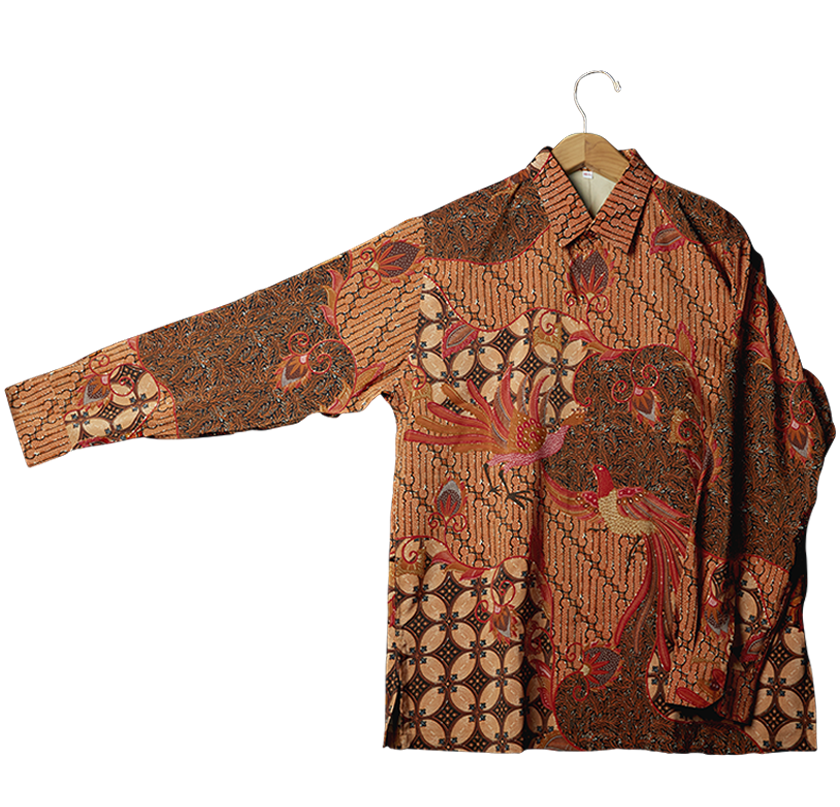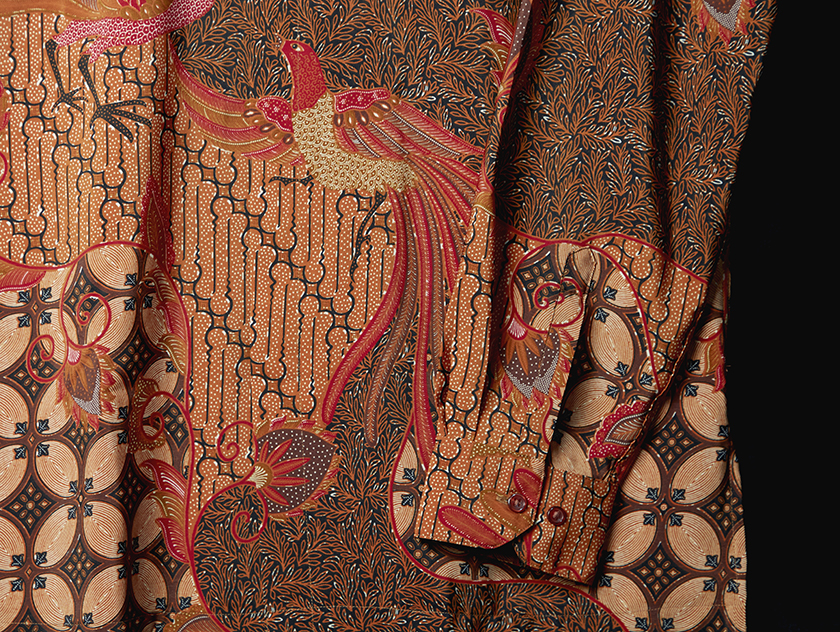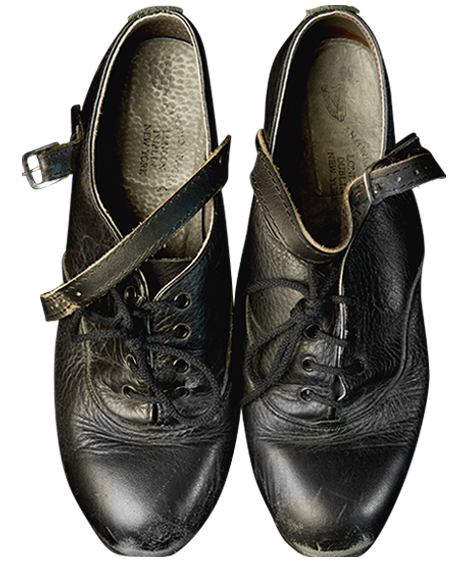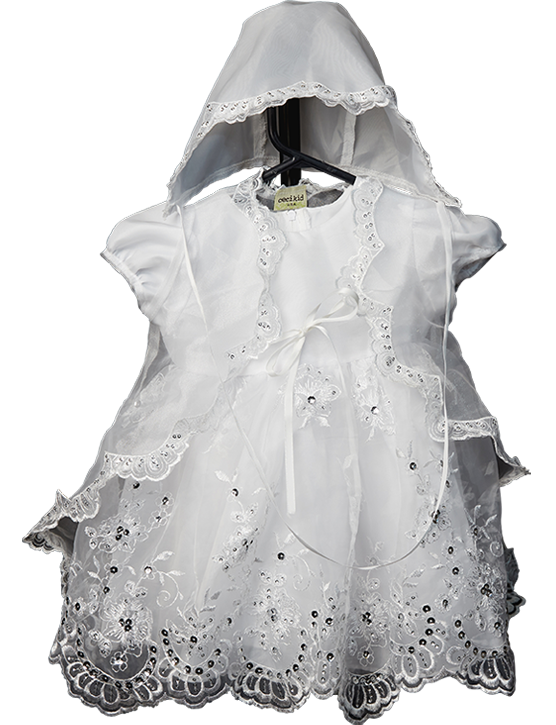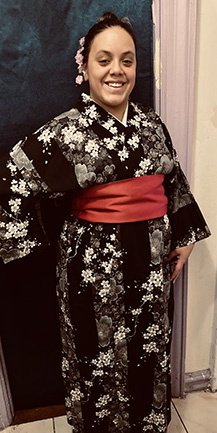Batik
ABOUT
This warm-colored batik shirt comes from Java, Indonesia. Created by one of the best manufacturers of this fabric dyeing method, the shirt is adorned with geometrically complex patterns and embellished with a pair of fiery birds of paradise. This garment serves as a prime example of the batik wax resist dyeing process. Before the batik industry was revolutionized by big factories like the Batik Keris company that made this garment, batik fabric dyeing was an activity designed for many participants. The wax-resist process is arduous. An entire village would work on a batch of cloth for one to several weeks, depending on the amount of people involved. Women created the detailed motifs and designs on the fabric using metal stamps, or cap (pronounced chap) or by sliding hot wax off of a stylus using a method called tulis. Men typically performed the dyeing. After the Dutch colonized Indonesia in the seventeenth century, batik-dyed cloth became an economic contribution in trade with the West and the technique expanded with the Dutch East India Company. With the introduction of the cap metal stamping method, Indonesian batik designs could be manufactured on a larger scale, allowing for the spread of the style in Europe where it was a prized “exotic” fabric. Clothing attire made from batik dyed fabrics are used for many different occasions, such as prayer, weddings, and other ceremonies.
— Jeancarlo Gutierrez and Kerwin Phillips
SPANISH TRANSLATION BY JEANCARLO GUTIERREZ AND KERWIN PHILLIPS
Esta camisa cálida al estilo Batik viene de Indonesia Central. Fue creada por uno de los mejores fabricantes de este estilo de teñir, y está adornada con complejos patrones geométricos y engalanada con unas aves de paraíso. Sirve como excelente ejemplo del estilo de teñido con cera llamado “Batik“. Este proceso es arduo, y requiere de muchas personas por cada grupo de telas y cera. Hace muchas décadas, antes de que la industria fuera revolucionada por las grandes fábricas, la Batik Keris, la compañía que creó esta pieza en particular, el trabajo en Batik requería de muchos participantes. Una aldea completa podría estar involucrada en un grupo de telas por una o más semanas dependiendo de la cantidad de participantes. Los hombres hacían el trabajo pesado, mientras que las mujeres creaban los diseños exóticos utilizando estampillas de metal llamadas cap (pronunciado Chap) o deslizando la cera desde un cincel utilizando un método llamado Tulis. Estos diseños eran una gran sensación en ese entonces, en especial tras la ocupación holandesa, y eso afectó la distribución de mercancía en el archipiélago indonesio en los siglos dieciséis y diecisiete. Estos atuendos eran utilizados para ocasiones diversas, tales como oraciones y bodas, entre otras ceremonias.
Click on Image to View Gallery
ORIGIN
Java, Indonesia
APPROXIMATE DATE
c. 2020
MATERIALS
Dyed cotton
COLLECTION OF
Stephen Saputra
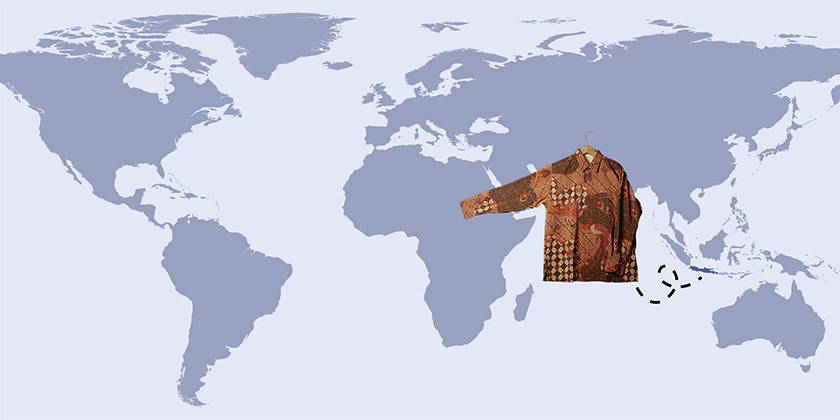
Batik
Click on Image to View Gallery
ABOUT
This warm-colored batik shirt comes from Java, Indonesia. Created by one of the best manufacturers of this fabric dyeing method, the shirt is adorned with geometrically complex patterns and embellished with a pair of fiery birds of paradise. This garment serves as a prime example of the batik wax resist dyeing process. Before the batik industry was revolutionized by big factories like the Batik Keris company that made this garment, batik fabric dyeing was an activity designed for many participants. The wax-resist process is arduous. An entire village would work on a batch of cloth for one to several weeks, depending on the amount of people involved. Women created the detailed motifs and designs on the fabric using metal stamps, or cap (pronounced chap) or by sliding hot wax off of a stylus using a method called tulis. Men typically performed the dyeing. After the Dutch colonized Indonesia in the seventeenth century, batik-dyed cloth became an economic contribution in trade with the West and the technique expanded with the Dutch East India Company. With the introduction of the cap metal stamping method, Indonesian batik designs could be manufactured on a larger scale, allowing for the spread of the style in Europe where it was a prized “exotic” fabric. Clothing attire made from batik dyed fabrics are used for many different occasions, such as prayer, weddings, and other ceremonies.
— Jeancarlo Gutierrez and Kerwin Phillips
SPANISH TRANSLATION BY JEANCARLO GUTIERREZ AND KERWIN PHILLIPS
Esta camisa cálida al estilo Batik viene de Indonesia Central. Fue creada por uno de los mejores fabricantes de este estilo de teñir, y está adornada con complejos patrones geométricos y engalanada con unas aves de paraíso. Sirve como excelente ejemplo del estilo de teñido con cera llamado “Batik“. Este proceso es arduo, y requiere de muchas personas por cada grupo de telas y cera. Hace muchas décadas, antes de que la industria fuera revolucionada por las grandes fábricas, la Batik Keris, la compañía que creó esta pieza en particular, el trabajo en Batik requería de muchos participantes. Una aldea completa podría estar involucrada en un grupo de telas por una o más semanas dependiendo de la cantidad de participantes. Los hombres hacían el trabajo pesado, mientras que las mujeres creaban los diseños exóticos utilizando estampillas de metal llamadas cap (pronunciado Chap) o deslizando la cera desde un cincel utilizando un método llamado Tulis. Estos diseños eran una gran sensación en ese entonces, en especial tras la ocupación holandesa, y eso afectó la distribución de mercancía en el archipiélago indonesio en los siglos dieciséis y diecisiete. Estos atuendos eran utilizados para ocasiones diversas, tales como oraciones y bodas, entre otras ceremonias.
ORIGIN
Java, Indonesia
APPROXIMATE DATE
c. 2020
MATERIALS
Dyed cotton
COLLECTION OF
Stephen Saputra

OTHER OBJECTS FROM THE EXHIBITION

